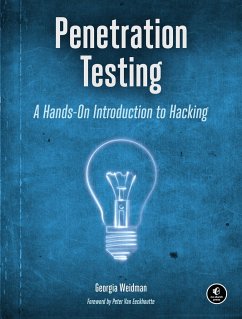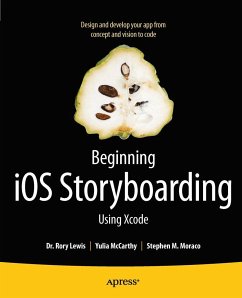
Hacking and Securing IOS Applications
Stealing Data, Hijacking Software, and How to Prevent It
Versandkostenfrei!
Versandfertig in über 4 Wochen
36,99 €
inkl. MwSt.
Weitere Ausgaben:

PAYBACK Punkte
18 °P sammeln!
Based on unique and previously undocumented research, this book by noted forensic expert Jonathan Zdziarski shows the numerous weaknesses that exist in typical iPhone and iPad apps. Zdziarski shows finance companies, large institutions and others where the exploitable flaws lie in their code, and in this book he will show you as well, in a clear, direct, and immediately applicable style.
If you're an app developer with a solid foundation in Objective-C, this book is an absolute must - chances are very high that your company's iOS applications are vulnerable to attack. That's because malicious attackers now use an arsenal of tools to reverse-engineer, trace, and manipulate applications in ways that most programmers aren't aware of.
This guide illustrates several types of iOS attacks, as well as the tools and techniques that hackers use. You'll learn best practices to help protect your applications, and discover how important it is to understand and strategize like your adversary. Examine subtle vulnerabilities in real-world applications - and avoid the same problems in your apps Learn how attackers infect apps with malware through code injection Discover how attackers defeat iOS keychain and data-protection encryption Use a debugger and custom code injection to manipulate the runtime Objective-C environment Prevent attackers from hijacking SSL sessions and stealing traffic Securely delete files and design your apps to prevent forensic data leakage Avoid debugging abuse, validate the integrity of run-time classes, and make your code harder to trace
This guide illustrates several types of iOS attacks, as well as the tools and techniques that hackers use. You'll learn best practices to help protect your applications, and discover how important it is to understand and strategize like your adversary. Examine subtle vulnerabilities in real-world applications - and avoid the same problems in your apps Learn how attackers infect apps with malware through code injection Discover how attackers defeat iOS keychain and data-protection encryption Use a debugger and custom code injection to manipulate the runtime Objective-C environment Prevent attackers from hijacking SSL sessions and stealing traffic Securely delete files and design your apps to prevent forensic data leakage Avoid debugging abuse, validate the integrity of run-time classes, and make your code harder to trace













